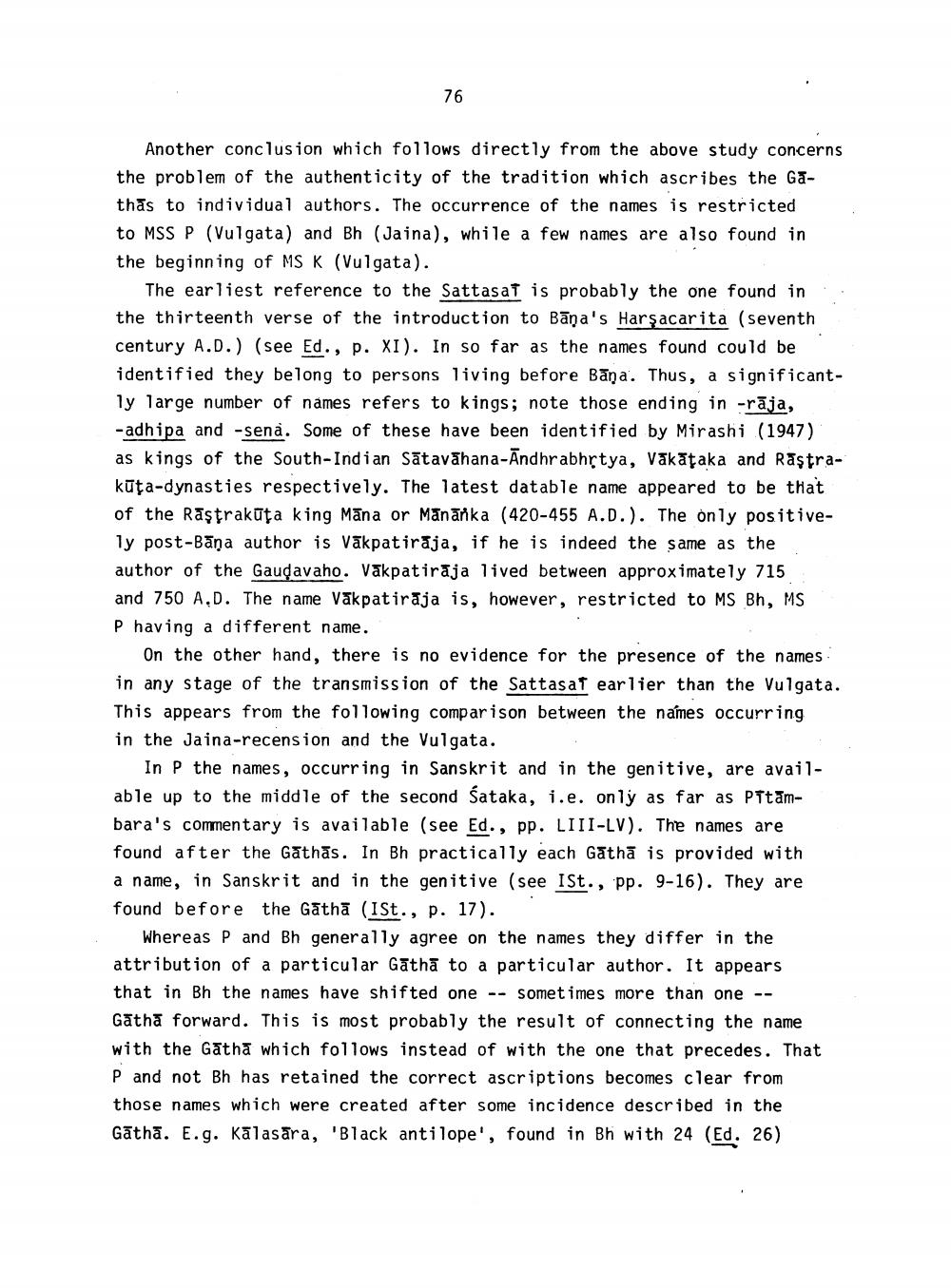________________
76
Another conclusion which follows directly from the above study concerns the problem of the authenticity of the tradition which ascribes the Gathās to individual authors. The occurrence of the names is restricted to MSS P (Vulgata) and Bh (Jaina), while a few names are also found in the beginning of MS K (Vulgata).
The earliest reference to the Sattasat is probably the one found in the thirteenth verse of the introduction to Bāna's Harşacarita (seventh century A.D.) (see Ed., p. XI). In so far as the names found could be identified they belong to persons living before Bāna. Thus, a significantly large number of names refers to kings; note those ending in -rāja, -adhipa and -sena. Some of these have been identified by Mirashi (1947) as kings of the South-Indian Sātavāhana-Andhrabhrtya, Vākāțaka and Rastrakūţa-dynasties respectively. The latest datable name appeared to be that of the Rastrakūta king Māna or Mānāňka (420-455 A.D.). The only positively post-Bāna author is Vākpatirāja, if he is indeed the same as the author of the Gauqavaho. Vākpatirāja lived between approximately 715 and 750 A.D. The name Vākpatirāja is, however, restricted to MS Bh, MS P having a different name.
On the other hand, there is no evidence for the presence of the names in any stage of the transmission of the Sattasaf earlier than the Vulgata. This appears from the following comparison between the names occurring in the Jaina-recension and the Vulgata.
In P the names, occurring in Sanskrit and in the genitive, are available up to the middle of the second Sataka, i.e. only as far as PTtāmbara's commentary is available (see Ed., pp. LIII-LV). The names are found after the Gathās. In Bh practically each Gathā is provided with a name, in Sanskrit and in the genitive (see ISt., pp. 9-16). They are found before the Gathā (ISt., p. 17).
Whereas P and Bh generally agree on the names they differ in the attribution of a particular Gathā to a particular author. It appears that in Bh the names have shifted one -- sometimes more than one -- Gātha forward. This is most probably the result of connecting the name with the Gathā which follows instead of with the one that precedes. That P and not Bh has retained the correct ascriptions becomes clear from those names which were created after some incidence described in the Gātha. E.g. Kālasāra, 'Black antilope', found in Bh with 24 (Ed. 26)




